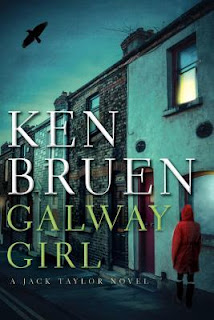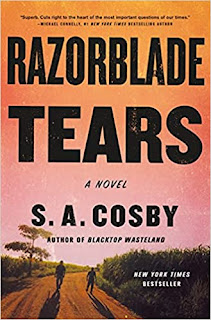Dutch author Anne van Doorn first joined us back in August. He is a regular reader and commentator here at SleuthSayers. He's also a friend of mine. I'm pleased to share his guest column with you today.— Barb Goffman
My American Project – Where does the story take place?
by Anne van Doorn
When I challenged myself to write a mystery novel in American English, I confronted myself with an important question: where will my story take place? Most writers would recommend staying on familiar ground. Write about what you know. I’ve followed that advice for over twenty years. Many of my stories are set in the area where I live, in the Netherlands.
However, I discovered that few people outside this area are interested in stories taking place here. At least, bookstore owners elsewhere don’t sell my books. National newspapers don’t pay attention to them—and my country is roughly the size of New Jersey. I honestly don’t think anyone would be interested in a mystery novel set in my area, written in American English. That’s just too…outlandish.
However, write about what you know is solid advice. That's why I’ve decided to set my story in the only part of the United States I’ve ever visited: Manhattan, a borough of New York City. Even though it has been ten years ago now, in April 2011, I still have vivid memories of my time there. I have many photos and some video footage to refresh my memory. I stayed near the UN Headquarters, in a small apartment in the New York Tower on East 39th Street, just off First Avenue. I walked the streets, traveled on the subway, rode the avenues and streets, and saw many places, including the Metropolitan Museum of Art and the New Amsterdam Theatre to see Mary Poppins the Musical. Central Park was like a magnet to me.
The advantages
My choice for Manhattan offers, in addition to my experiences, some advantages. First and foremost, everyone around the world knows New York, whether they have visited the city or not. It’s easy for a reader to imagine the place. We’ve all seen pictures of the high-rises, the avenues, the bridges spanning the East River and the Hudson. I don’t choose New York to gain a readership there, but for everybody’s familiarity with it. The readers who love the kind of story I want to write—the whodunit—will recognize the city in their mind’s eye.
A second advantage is that New York City is a town of immigrants and ex-pats. For me, as a Dutchman, it would be difficult to write convincingly about Americans in the rural parts of the country. New York City, however, is a melting pot of nationalities and cultures. Perhaps portraying the main character with European roots—a first- or second-generation American—is easier. If he behaves in a non-American way, it’s easy to understand why. Besides, didn’t Agatha Christie have huge success with her novels about a Belgian refugee living in England? And what about our very own Josh Pachter? Didn’t he write stories about Mahboob Chaudri, a Pakistani working as police officer in Bahrain? I think he did that convincingly—an inspiring example!
A third advantage: there are tons of information on the internet: photos, videos, and firsthand experiences, including about a place I once stayed. Visiting Google Maps allows me to read dozens of reviews written by people living there. Did you know there are dead cockroaches in the laundry room? And the elevators are consistently out of order. That’s what the reviews say, at least. Oh, the internet is a voyeuristic delight!
And last but not least, wasn’t Manhattan once a colony of the Netherlands? I think it’s appropriate to firmly plant a Dutch flag on New York soil, again!
Discovering the city
I haven’t decided yet what part of Manhattan I'll use as a base for my American Project. But what I could already do is study how other writers portray the city and its police force. I don’t think I will fool the New Yorker into believing I’m one of them, but I want to get as close as possible.
Since I started working on the American Project, I’ve read and learned from the Rex Stout and Ellery Queen books. What strikes me is that their descriptions of the city are scarce. But with only a few of them, they conjure up recognizable images. I think that’s the way to go, as I want to write a plot-oriented story—definitely not a travel guide!
On my TBR-pile are books about New York that will help me discover interesting places. In this regard, my friends, I can do with recommendations. Which book should I buy to get to know New York? What websites are worth checking out? Do you know a YouTube channel that shows Manhattan as it is: the good, the bad, the ugly?





































